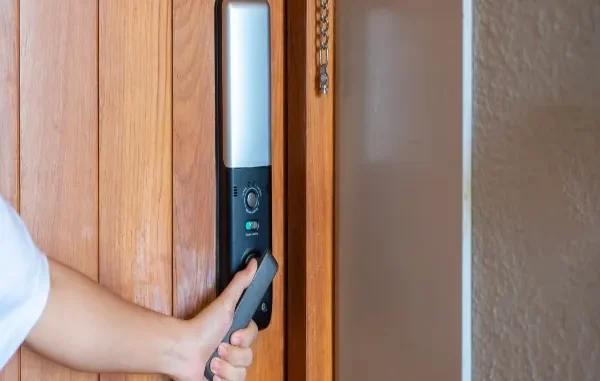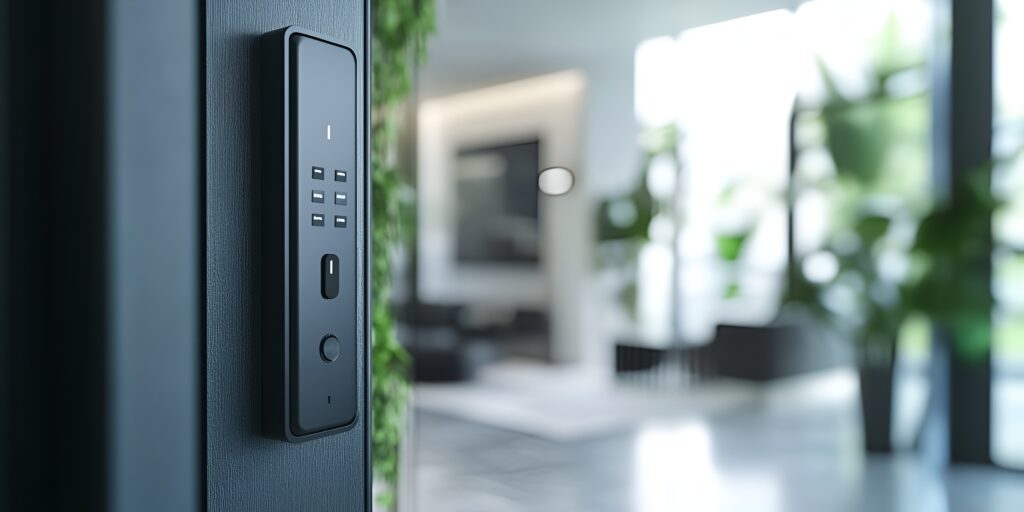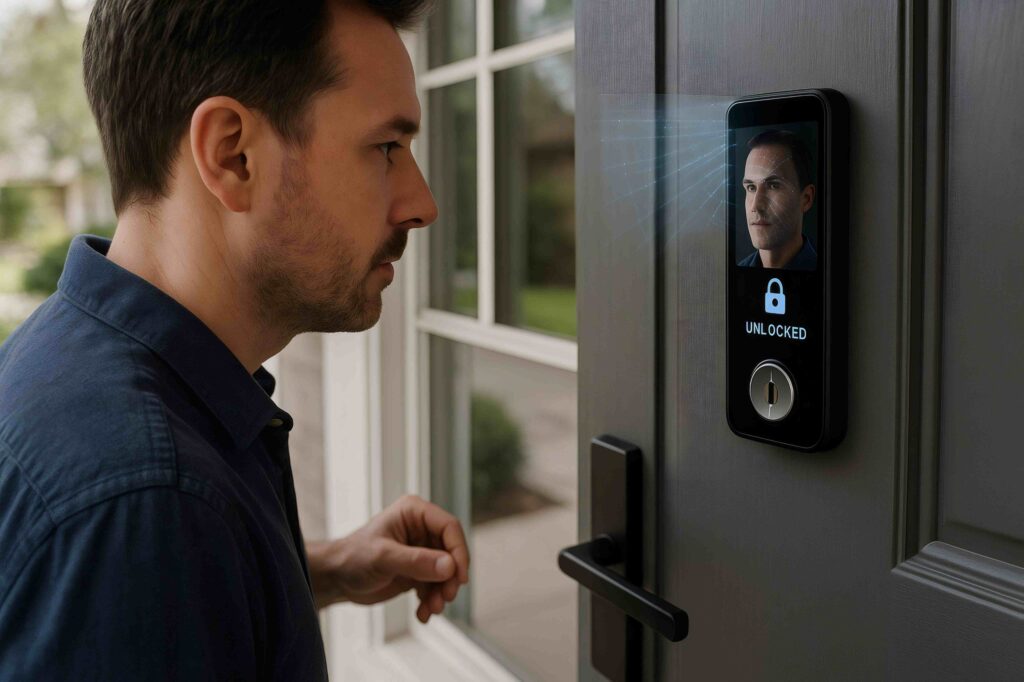

Losing power is frustrating enough. But if you’re using a smart door lock, it raises a big question: will you still be able to get inside your own home?
Smart locks rely on electricity, either from your home’s wiring or built-in batteries. But that doesn’t mean they stop working when the lights go out. Most modern models have backup systems in place to keep your door secure and accessible.
Let’s break down how smart locks behave during power outages and what you can do to make sure you’re not locked out.
How Smart Locks Usually Operate
Smart locks use different types of power sources. Some plug into your home’s electrical system. Others run completely on batteries. Many use Bluetooth or your Wi-Fi network to connect to your smartphone or smart home devices.
Battery-powered locks are the most common. These don’t rely on your home’s power grid, so they keep working even during blackouts. Features like remote locking, app notifications, or voice access might go offline, but the core locking function usually stays intact.
Hardwired smart locks, on the other hand, need electricity from your home. If the power goes out and there’s no battery backup, those could stop responding unless the design includes a fallback option.
What Happens When the Power Goes Out
When a blackout hits, most smart locks keep functioning. That’s because the lock mechanism runs on battery power, not your wall outlet. You’ll still be able to lock and unlock your door.
However, you might lose access to some connected features. Your lock may not talk to your mobile app. Notifications may stop. Voice command features might stop working if your internet goes down. But the basics, such as locking and unlocking, should still work.
If you want extra peace of mind, a facial recognition smart lock can help you get in without needing power, Wi-Fi, or a phone. All you need is your face. This kind of lock is useful in emergencies because it skips apps and codes altogether.
Role of Backup Batteries and Manual Keys
Even battery-powered smart locks need attention. Batteries wear out. That’s why it’s smart to check them regularly and change them before they die.
Some models include a hidden key slot. Others have a 9-volt battery jump-start feature. With that, you can touch a 9V battery to two terminals on the lock and give it just enough juice to open the door.
If your lock has a backup key, keep it somewhere safe but accessible. Don’t leave it inside the house or locked in your car. Make sure someone else you trust has a copy too.
What You Can Still Do During an Outage
Most smart locks give you multiple ways to get in. You can usually use a PIN code, fingerprint, or digital keys, like a code sent to your phone or a virtual key shared through an app. Some let you program key fobs or cards. Others work with voice command or a simple press of a button.
During an outage, smartphone control may pause. You might not get real-time alerts or be able to check if your door is locked from your phone. But the door itself? Still usable.
Offline access modes are helpful too. These let you set up access codes or access methods that don’t need an internet connection. That way, you stay in control no matter what’s happening with your Wi-Fi.
Preparing Your Smart Lock for Power Loss
You don’t need to wait for a blackout to start planning. You can take steps now to avoid surprises later.
Replace the batteries regularly. Don’t wait for the warning beep. Some locks send a low battery alert to your phone. Set a calendar reminder every few months to check them.
Store a 9-volt battery nearby if your lock supports jump-starting. Tape one inside your mailbox or keep it in your bag.
Stick with smart lock models that offer multiple ways to unlock, including keypad, biometric, manual key, or even face recognition. Models with built-in offline features give you more flexibility.

It also helps if your lock supports two-factor authentication to keep intruders out, especially when app connections aren’t available.
Common Misunderstandings
It’s easy to worry that your door will swing open when the power cuts out. But that’s not how these locks work. They don’t unlock automatically. They don’t leave your home unprotected.
Another common fear is that you’ll be stuck outside with no way in. If your lock uses batteries or has a key slot, that’s not likely. And if you’ve chosen a lock with access control options like face or fingerprint, your options increase.
You can also connect your lock to Google Assistant or another digital assistant for hands-free control, but keep in mind that these features rely on internet access.
Home security setups can go a step further. You might pair your lock with security cameras or a broader security system to monitor who’s coming and going, even when you’re away.
Just make sure you’ve tested those backup methods before you need them. Don’t wait for an emergency.
Key Takeaways
You don’t need to panic when the power goes out. Most keyless entry systems keep doing their job. As long as the batteries are charged and your lock has a fallback method, you’ll still get inside.
Check your lock’s features. Keep a backup key or battery ready. And consider a model with more than one way to unlock.
Blackouts happen. With the right setup, your smart lock will keep you secure, power or no power.
Leave a Reply